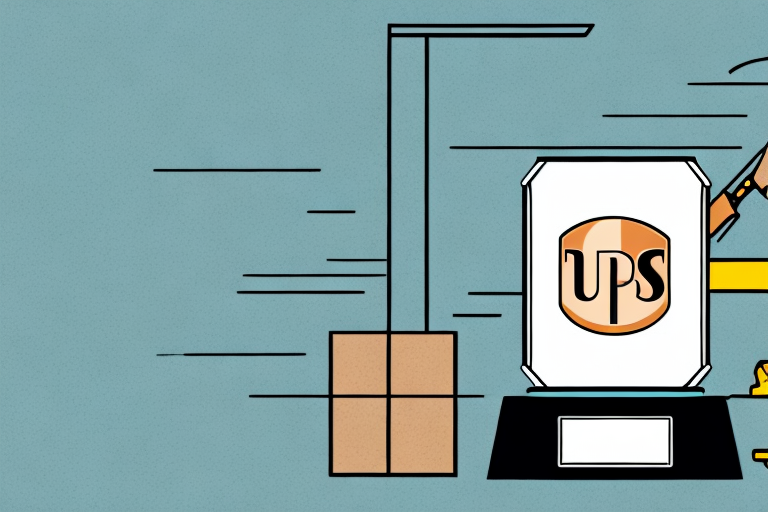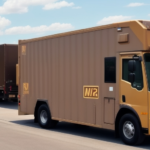How to Determine UPS Shipping Rates
Understanding how UPS calculates its shipping rates is crucial for both individuals and businesses aiming to optimize their shipping costs. Factors such as package size, weight, destination, and delivery time all play significant roles in determining the cost of shipping with UPS. In this comprehensive guide, we'll delve into the various elements that affect UPS shipping rates, provide insights on accurately measuring your package, and explore the different UPS shipping services available along with their associated costs.
Factors That Affect UPS Shipping Rates
The cost of UPS shipping is influenced by several key factors:
- Package Size and Weight: Larger and heavier packages typically incur higher shipping costs.
- Destination: The distance your package travels from the origin to the destination impacts the rate.
- Delivery Time: Faster delivery options, such as overnight or two-day shipping, come at a premium.
- Fuel Prices: Fluctuations in fuel costs can affect shipping rates.
- Market Demand: High demand periods, like holidays, may lead to increased rates.
- Additional Fees and Surcharges: Factors such as declared value, residential delivery, and special handling requirements can add to the overall cost.
Moreover, the type of service selected plays a crucial role in determining shipping rates. UPS offers a range of shipping options, including ground, air, and international services, each with its own pricing structure. Businesses that ship in large volumes may also be eligible for discounts or promotional rates, making it essential to explore these opportunities to reduce shipping expenses.
Understanding UPS Shipping Zones
Destination is a pivotal factor in determining UPS shipping rates. UPS utilizes a zone-based system, dividing all shipping destinations into nine zones:
- Zone 1: Locations closest to the origin point.
- Zone 9: Locations farthest from the origin point.
The zone number assigned to a destination directly correlates with the distance from the origin; the higher the zone, the greater the distance and the higher the shipping cost. Additionally, UPS considers the package's weight and size within these zones. Even if a package is shipped to a lower zone, oversized or heavy packages may result in higher rates.
Choosing the right shipping option is essential. UPS offers various services such as ground, air, and international shipping, each with different rates and delivery times. Evaluating these factors helps in selecting the most cost-effective shipping method tailored to your needs.
How to Measure Your Package for Accurate Shipping Calculation
Accurate measurement of your package is vital to avoid overpaying or underpaying for shipping. UPS calculates shipping rates based on both the physical weight and the dimensional weight of a package. The dimensional weight is determined by the package's length, width, and height, which reflects the space it occupies during transit.
Follow these steps to measure your package correctly:
- Use a tape measure to determine the length, width, and height of the package.
- Add the three measurements together.
- Divide the total by 166 (or 139 for international shipments) to calculate the dimensional weight.
If the dimensional weight exceeds the actual weight, UPS will use the dimensional weight for rate calculations. For irregularly shaped packages, measure the widest points to ensure accuracy.
Additionally, consider the packaging materials used. Heavy or bulky materials like bubble wrap or foam can increase both the weight and dimensions, leading to higher shipping costs. Opting for lightweight materials such as air pillows or paper can help minimize these costs.
Different UPS Shipping Services and Their Costs
UPS offers a variety of shipping services tailored to different needs and budgets. The most common UPS shipping services include:
- UPS Ground: The most affordable option, with delivery typically taking between 1-5 business days.
- UPS 3 Day Select: Guarantees delivery within three business days from the shipping date.
- UPS 2nd Day Air: Ensures delivery within two business days from the shipping date.
- UPS Next Day Air Saver: Guarantees delivery by the end of the following business day.
The cost of each service varies based on package size, weight, destination, and the chosen delivery timeframe. Additionally, UPS provides optional services such as signature confirmation, insurance, and Saturday delivery for an extra fee, allowing customers to customize their shipping experience according to their specific needs.
How to Use the UPS Online Shipping Calculator
The [UPS Online Shipping Calculator](https://www.shipscience.com/ups-online-shipping-calculator) is an indispensable tool for estimating your shipping costs accurately. Follow these steps to utilize the calculator effectively:
- Visit the UPS website and navigate to the shipping calculator tool.
- Enter the package's weight, dimensions, and destination details.
- Select the desired shipping service to view the associated costs.
The calculator provides a detailed breakdown of available shipping options along with their costs, helping you make informed decisions. It's important to ensure that the information entered is accurate, as discrepancies between the estimated and actual package details can lead to unexpected charges.
Additionally, the calculator allows you to compare different shipping services side by side, enabling you to balance cost with delivery speed to find the most suitable option for your needs.
Tips for Saving Money on UPS Shipping Rates
Shipping costs can accumulate quickly, but there are several strategies to minimize expenses:
- Choose UPS Ground: Whenever possible, opt for UPS Ground shipping, which is typically the most cost-effective option.
- Drop Off Packages: Dropping off your package at a UPS location can save on pickup fees.
- Utilize Free Packing Supplies: Take advantage of UPS's complimentary packing materials to ensure your package meets shipping standards without incurring additional costs.
- Use Third-Party Shipping Software: Tools that compare UPS rates with other carriers can help you find the most economical shipping options.
- Negotiate Rates: If you are a frequent shipper, negotiate directly with UPS for better rates based on your shipping volume.
- Consolidate Shipments: Shipping multiple packages at once can qualify you for multi-package discounts.
Implementing these tips can lead to significant savings, especially for businesses with high shipping volumes.
How to Negotiate Better Rates with UPS for Business Shipping
Businesses that ship frequently can benefit from negotiating better rates with UPS. Here are some strategies to consider:
- Provide Detailed Shipping Data: Share comprehensive information about your shipping volume, frequency, and patterns with your UPS account representative to demonstrate your value as a customer.
- Explore Alternative Services: Consider using services like UPS SurePost or UPS Ground with Freight Pricing, which may offer lower rates for larger or less time-sensitive shipments.
- Review and Adjust Regularly: Regularly review your shipping invoices to ensure you are billed correctly according to negotiated rates and address any discrepancies promptly.
By actively managing your shipping strategy and maintaining open communication with UPS, you can secure favorable rates that align with your business needs.
Common Mistakes to Avoid When Estimating UPS Shipping Rates
Accurate estimation of UPS shipping rates is essential to prevent unexpected costs and ensure smooth delivery. Avoid the following common mistakes:
- Underestimating Weight or Dimensions: Incorrect measurements can lead to underpayment or additional charges. Always measure and weigh your package accurately.
- Ignoring Additional Fees: Fees for services like residential delivery, insurance, or fuel surcharges can increase the total cost. Factor these into your calculations.
- Assuming Uniform Service Costs: Different UPS shipping services have varying costs and delivery times. Do not assume all services are priced the same.
- Using Outdated Information: Ensure you are using the latest UPS rate structures and zone maps to avoid inaccuracies in your estimates.
Comparison of UPS Shipping Rates with Other Carriers
When selecting a shipping carrier, it's beneficial to compare rates across multiple providers to ensure you're getting the best deal. Consider the following carriers in addition to UPS:
- FedEx: Known for reliable overnight shipping services.
- US Postal Service (USPS): Offers competitive rates, especially for small packages and letters.
- DHL: Specializes in international shipping with a vast global network.
When comparing rates, take into account factors such as delivery time frames, package size and weight restrictions, and any special handling requirements to determine the most cost-effective and efficient option for your shipping needs.
Understanding Additional Fees and Surcharges in UPS Shipping Rates
UPS shipping rates can include various additional fees and surcharges that may affect the total cost. Key fees to be aware of include:
- Address Correction: An extra fee may be charged if a package is sent to an incorrect address that requires correction and redirection.
- Fuel Surcharge: This fee offsets the fluctuating cost of fuel and can vary based on current fuel prices.
- Delivery Area Surcharges: Deliveries to remote or less accessible areas may incur additional charges.
- Declared Value: If a package contains valuable items, declaring its value can lead to higher insurance fees based on the declared amount.
Understanding these potential additional costs is essential for accurate budgeting and preventing unexpected expenses when shipping with UPS.
How to Track Your Shipment After It's Been Sent
Tracking your UPS shipment is straightforward and provides peace of mind by allowing you to monitor your package's progress in real-time. Here's how to track your shipment:
- Obtain your tracking number from your UPS receipt or confirmation email.
- Visit the UPS Tracking page on their website.
- Enter your tracking number in the designated field and click "Track."
For added convenience, you can sign up for email or text notifications to receive updates on your package's status, including when it's out for delivery or has been successfully delivered.
By utilizing UPS's tracking tools, you can stay informed about your shipment's journey, ensuring timely delivery and allowing you to address any potential issues proactively.
With this comprehensive guide to determining UPS shipping rates, you now have the knowledge to ship your packages confidently and cost-effectively. Remember to consider factors such as distance, size, and weight, and explore opportunities to save money through negotiation, comparison, and precise package measurement.






















